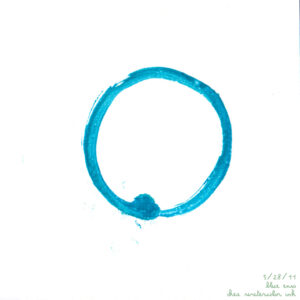Ahimsa.
Non-Violence.
In thought, language, and behavior.
“We must disrupt harm whenever we encounter it.”
-Yogi & Activist Seane Corn
⁀︶
Ernest Holmes:
‘New arts, new sciences, new philosophies, better government, and a high civilization wait on our thoughts. The infinite energy of Life, and the possibility of our future evolution, work through our imagination and will. The time is ready the place is where we are now, and it is done unto all as they really believe and act.’
⁀︶
Pierre Teilhard de Chardin:
‘Fuse the powers of the sacred heart with the energies of the body, and you can transform everything.’
⁀︶
2 Corinthians 4:16/The Message:
‘So, we’re not giving up. How could we! Even thought on the outside it often looks like things are falling apart on us, on the inside, where GAIA is making new life, not a day goes by without Her unfolding grace.’
⁀︶
Rolph Gates & Katrina Kenison:
‘At a Native American gathering in Arizona for the 1999 summer solstice, a Hopi elder said: “There is a river flowing now, very fast. It is so great and swift that there are those who will be afraid. They will try to hold on to the shore. They will feel they are being torn apart and suffer greatly. Know that the river has its destination.
The elders say we must push off into the middle of the river, keep our eyes open and our heads above the water. See who is in there with you and celebrate.
At this time in history we are to take nothing personally, least of all ourselves, for the moment we do that, our spiritual growth comes to a halt.
The time of the lone wolf is over.
Gather yourselves; banish the work ‘struggle’ from your attitude and vocabulary. All that we do now must be done in a sacred way and in celebration. We are the ones we’ve been waiting for.’
⁀︶
The Enlightened Heart, p. 86:
‘With the happiness held in one inch-square heart you can find the whole space between heaven and earth.’
⁀︶
Hildegard of Bingen:
‘Divinity is in its omniscience and omnipotence like a wheel, a circle, a whole, that can neither be understood, nor divided, nor begun, nor ended.’
⁀︶
Mark Nepo:
‘Each person is born with an unencumbered spot…free of expectation and regret…free of ambition and embarrassment, free of fear and worry…an umbilical spot of grace where we were each first touched by God, Spirt, Sophia, Gaia.
It is this spot of grace that issues pace. Psychologists call this spot the Psyche, theologians call it the Soul, Jung calls it the Seat of the Unconscious, Hindu masters call it Atman, Buddhists call it Dharma, Rilke calls it Inwardness, Sufis call it Qalb, and Jesus calls it the Center of our Love.
To know this spot of Indwardness is to know who we are, not by surface markers of identity, not by where we work to what we wear how how we like to be addressed, but by feeling our place in relation to the Infinite and by inhabiting it.
This is our lifeline task, for the nature of becoming is a constant filming over of where we’ve been, while nature of being is a constant erosion of what is not essential.
Each of us lives in the midst of this ongoing tension, growing tarnished or covered over, only to be worn back to the incorruptible spot of grace at our core.
When the film is worn through, we have moments of enlightenment, moments of whiteness, moment of satori, as the Zen sages term int, moments of clear loving when inner meets outer, moments of full integrity of being, moments of complete Oneness.
And whether the film is a veil of culture, of memory, of mental or religious training, of trauma or sophistication, the removal of that film and the restoration of that timeless spot of grace is the goal of all therapy and education.
Fr Richard Rohr:
‘The real question is “What does this have to say to me?” Those who are totally converted come to every experience and ask not whether or not they liked it, but what does it have to teach them. “What’s the message or gift in this for me? How is God in this event? Where is God in this suffering?” This is a prayer of unveiling, asking that the cruciform shape of reality be revealed to us within the very shape and circumstances of our own lives.’


Leave a Reply